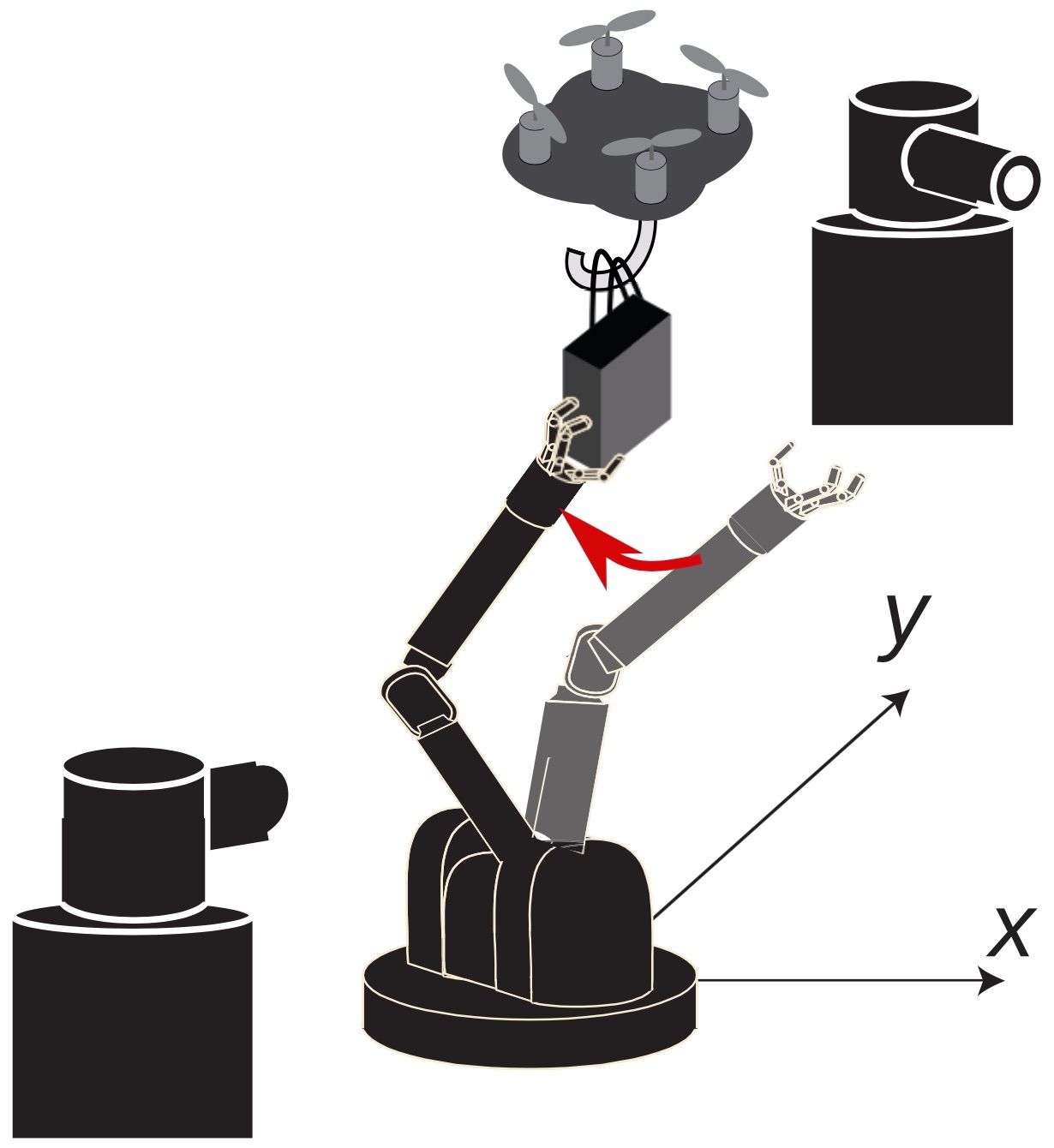High-Speed Robot Arm Hands Off Package to Delivery Drone

Urban delivery drones have their work cut out for them. We're not really sure whether the whole business model for urban delivery by drone will ultimately make sense, but for it to have a chance at working, drones will certainly benefit from being as energy efficient and time efficient as possible. The biggest waste of time and energy happens during pickup and delivery, when the drone is hovering rather than moving. Hovering is necessary since these drones may be often delivering things (like food and beverages) that need to be kept mostly upright and not delivered by a parachute or something.
If you were imagining the ideal drone delivery system, though, it would involve drones flying about at full speed, somehow picking up and delivering items safely without ever having to slow down. The pinpoint accuracy required by something like this isn't something that we're likely to see on a drone anytime soon, but what if we instead did all of that hard work on the ground, using a high-speed vision system and robot arm to attach a package to a drone as it flies past? The Ishikawa Group Laboratory at the University of Tokyo has already made it happen.
From a recent paper:
Concept of non-stop handover of a parcel to an airborne UAV. A supply station automatically loads a parcel onto the UAV and adjustment for the handover is achieved by controlling the supply station, which tracks the UAV using a high-speed vision system.
The Ishikawa Group, led by Professor Masatoshi Ishikawa, has been working with high-speed vision and manipulation systems for over a decade. You might remember them from YouTube hits like High Speed Dribbling and Rock Paper Scissors. The system you see in the video above uses a setup common to many of their projects: two high-speed cameras (1,000 frames per second) on pan-tilt mounts that can very precisely track objects (the hook on the bottom of the drone, in this case) while simultaneously calculating their position in space. One additional camera is used to track the UAV when it's farther away from the base station, since the high-speed cameras are optimized for things that are relatively close and bright. The arm is just two linear actuators with a platform to hold the payload.
Meanwhile, the UAV itself is very deliberately nothing special. The only modification required for it to pick up packages is a simple hook, and that hook could be installed on any kind of UAV you wanted, including fixed-wing drones or hybrids. And the hook also offers flexibility in terms of what it can hold-there's no internal payload bay that you have to stuff your payload into. If it fits on the hook and is within the drone's weight limits and aerodynamic tolerances, you're good to go.
 Image: Ishikawa Group
Image: Ishikawa Group Conceptual diagram of nonstop parcel handover using high-speed visual control with a six-axis robot.
The proof of concept demonstration in the video shows a drone moving at 1 meter per second, with the actual handoff taking place in about 0.3 second. This is obviously much faster than any other method of loading a package onto a drone that we've ever seen, and the researchers say that delivery simulations show substantial improvements in delivery efficiency over short distances-up to a 65 percent improvement in deliveries per day at a distance of 1 kilometer. The benefit goes down significantly at longer ranges, since the pickup is a smaller fraction of the total delivery time, but even at 4 km, simulations suggest an improvement of up to 18 percent. Next, the researchers would like to upgrade the two-axis robot arm used for the handoff to a six-axis arm, which would be able to reload itself while also doing some speed matching to help reduce the impact of the pickup.
Realistically, the immediate benefit of a system like this might not be very significant, simply because existing drone delivery services for consumers (all of which are very much in the prototype stage) have not yet reached a system saturation point where minutes or seconds really matter all that much. And having battery life measured in a few tens of minutes means that you'll need to stop the drone to swap batteries anyway. As batteries get better, though, and as new techniques circumvent their shortcomings, package handoffs like these could find a useful place in a drone-delivery system.
< Back to IEEE Journal Watch